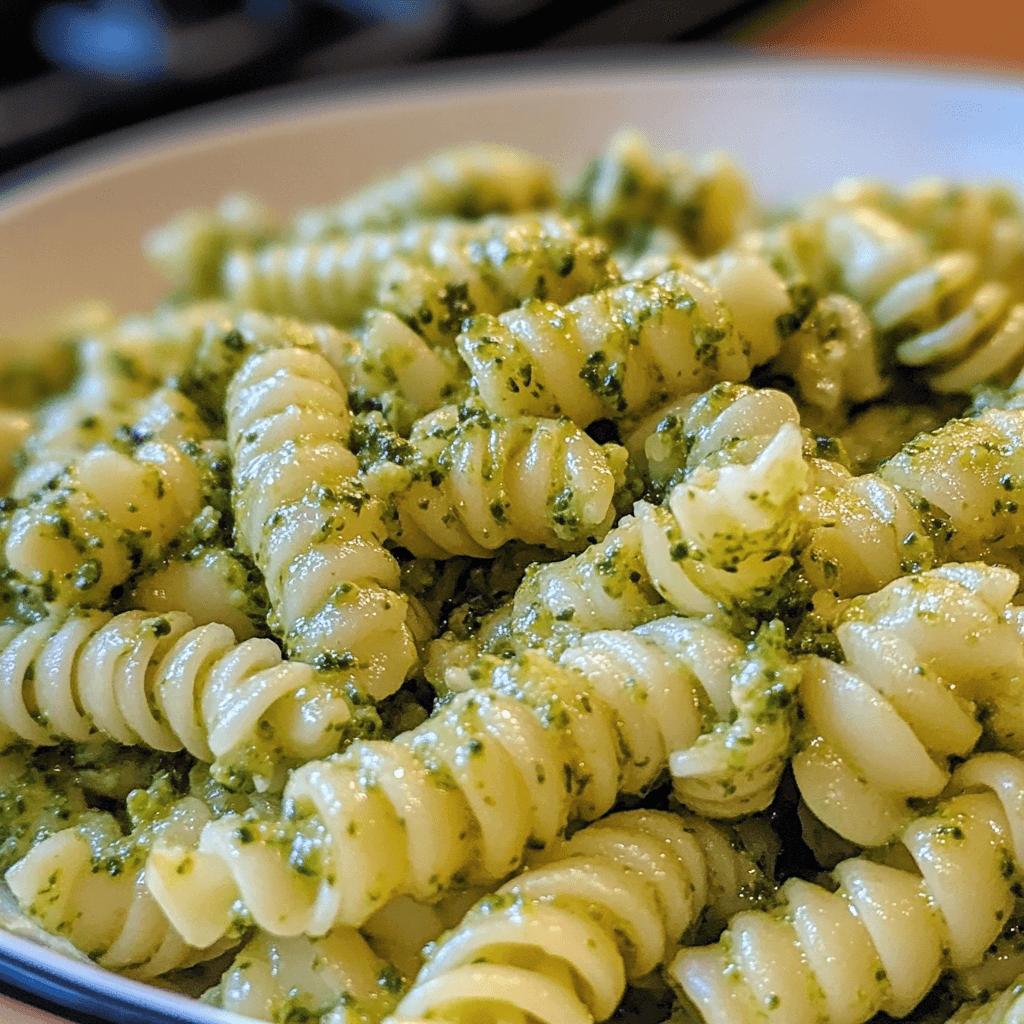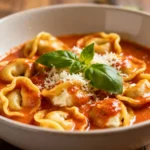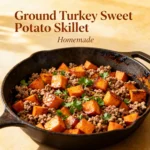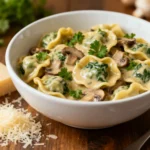Introduction
Broccoli pesto pasta is a vibrant, nutritious dish that combines the earthy flavors of broccoli with the rich creaminess of traditional pesto. This recipe offers a twist on classic pesto by incorporating broccoli as the primary ingredient, making it not only delicious but also packed with vitamins and fiber.
The History
Pesto traditionally hails from Genoa, Italy, where basil, pine nuts, garlic, Parmesan cheese, and olive oil are blended into a flavorful sauce. Over time, chefs and home cooks have adapted this classic recipe to include various greens and vegetables. Broccoli pesto emerged as a creative alternative, offering a fresh take while maintaining the essence of authentic pesto.
Ingredients Breakdown
- Broccoli: The star ingredient, providing a mild flavor and essential nutrients like vitamin C and fiber.
- Olive Oil: Adds richness and helps blend the ingredients smoothly.
- Nuts (Pine Nuts or Walnuts): Offers crunch and healthy fats, enhancing texture and taste.
- Cheese (Parmesan or Pecorino): Adds saltiness and depth to the sauce.
- Garlic: Infuses aromatic notes for a more robust flavor profile.
- Lemon Juice: Brightens the dish with its tangy zest.
- Pasta: Acts as the base, soaking up the flavors of the pesto.
Step-by-Step Recipe
- Prepare the Broccoli: Steam or blanch 2 cups of chopped broccoli florets until tender but still firm.
- Blend Ingredients: In a food processor, combine the cooked broccoli, 1/2 cup nuts, 1/2 cup grated cheese, 1 clove minced garlic, juice of 1 lemon, and 1/4 cup olive oil. Blend until smooth.
- Cook Pasta: Boil your favorite type of pasta according to package instructions until al dente. Reserve 1/2 cup of pasta water before draining.
- Mix Together: Toss the cooked pasta with the broccoli pesto, adding reserved pasta water if needed to achieve desired consistency.
- Serve: Garnish with extra cheese, nuts, or red pepper flakes for added flair.
Tips
- To save time, use frozen broccoli instead of fresh; simply thaw and pat dry before blending.
- For an even creamier texture, add a dollop of Greek yogurt or cream cheese to the pesto mix.
- If you’re out of Parmesan, substitute with nutritional yeast for a vegan-friendly option.
- Store leftover pesto in an airtight container in the fridge for up to one week or freeze portions for future meals.
Variations and Customizations
This versatile dish can be customized in numerous ways:
- Add protein such as grilled chicken, shrimp, or tofu for a heartier meal.
- Incorporate additional vegetables like cherry tomatoes, spinach, or zucchini for extra nutrition and color.
- Experiment with different types of pasta, including whole wheat, gluten-free, or even spiralized zucchini noodles for a low-carb alternative.
- Adjust spice levels by adding chili flakes or substituting half the broccoli with arugula for a peppery kick.
Health Considerations and Nutritional Value
Broccoli pesto pasta is a nutrient-dense dish that supports overall well-being. Broccoli provides antioxidants, fiber, and vitamins A, C, and K. Olive oil contributes healthy monounsaturated fats, while nuts supply protein and omega-3 fatty acids. However, portion control is key due to the calorie content from oils and cheeses. For those watching their sodium intake, opt for low-sodium versions of cheese or skip the cheese entirely.
Ingredients
- 2 cups broccoli florets
- 1/2 cup nuts (pine nuts or walnuts)
- 1/2 cup grated Parmesan or Pecorino cheese
- 1 clove garlic, minced
- Juice of 1 lemon
- 1/4 cup olive oil
- Salt and pepper to taste
- 8 oz pasta of choice
Directions
- Steam or blanch broccoli and set aside.
- Combine all pesto ingredients in a food processor and blend until smooth.
- Cook pasta and reserve some cooking water.
- Toss pasta with pesto, adding reserved water if necessary.
- Garnish and serve immediately.
FAQ
- Can I make this recipe ahead of time?
- Yes, you can prepare the pesto up to a day in advance and store it in the refrigerator. Add it to freshly cooked pasta just before serving.
- Is there a way to make this recipe vegan?
- Absolutely! Replace the cheese with nutritional yeast and use olive oil or another plant-based fat instead of butter for sautéing.
- What type of pasta works best?
- Any shape will work, but fusilli, penne, or spaghetti tend to hold onto the pesto particularly well.
Summary
Broccoli pesto pasta is a quick, healthy, and customizable dish that brings together fresh ingredients for a satisfying meal. With its vibrant flavors and adaptability, it’s perfect for any occasion!










